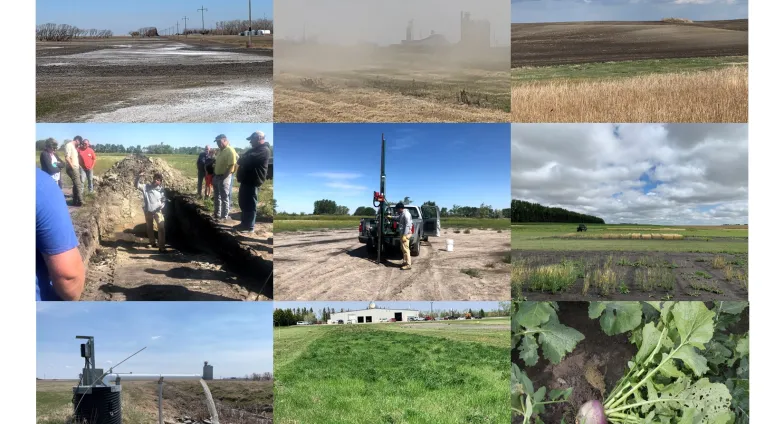Soil Health
SOIL HEALTH: for Present and for Future
North Dakota’s greatest natural resource is its land and soils. Remediating soil health issues such as salinity, sodicity, high magnesium (Mg2+) levels versus calcium (Ca2+), poor water infiltration, decreasing organic matter levels and lack of plant diversity will improve soil health for present day profitable and thriving farms, ranches and rural communities.
For the long-term improvement of soil health and sustainability of our agriculture, there are several practices producers can integrate into their operations over time. These practices will help reduce soil disturbance and loss of topsoil, increase soil organic matter, aggregates, pore space and water infiltration by improving structure and will maintain fertility by increasing nutrient and water holding capacity. In addition, application of livestock manure and introduction of cover crops in the rotation on a regular basis will add plant and microbial diversity and preserve and sustain soil health for future generations.
